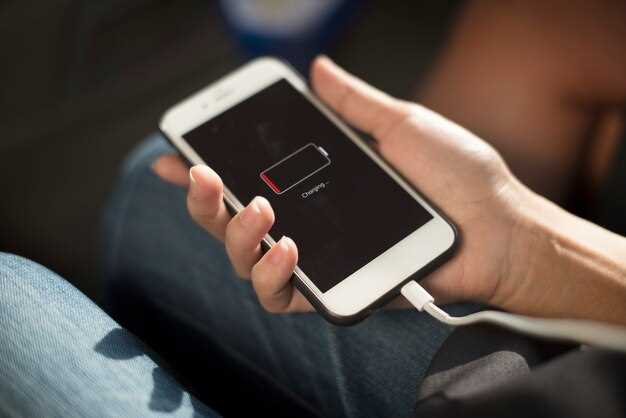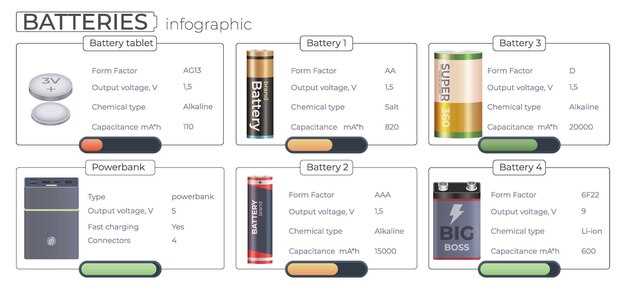
How to Diagnose a Dead Battery
- Arthur Rodriquez
- 0
- Posted on

When it comes to the smooth operation of our vehicles and electronic devices, the battery plays a crucial role. A dead battery often manifests through a series of noticeable symptoms that can alert users to potential issues. Understanding these symptoms is the first step in effective battery diagnosis, allowing for timely interventions to restore functionality and avoid further complications.
Common symptoms of a failing or dead battery include difficulty in starting the engine, dimming headlights, and frequent electronic malfunctions. These signs should not be ignored, as they are often indicative of deeper issues related to the battery’s health. By recognizing these early warning signs, users can take proactive measures to address battery failures before they escalate into more significant problems.
In this article, we will explore various methods for diagnosing a dead battery, including visual inspections and testing procedures. Additionally, we will provide practical solutions to remedy battery issues, ensuring you stay informed and prepared to tackle any battery-related challenges that may arise.
Identifying Common Signs of a Dead Battery

Recognizing the symptoms of a dead battery is crucial for timely diagnosis and resolution. One of the earliest indicators is difficulty starting the engine. If turning the key results in sluggish cranking or a complete lack of response, the battery may be failing.
Another common sign is the presence of dim or flickering lights. If your headlights or dashboard lights appear weaker than usual, this could indicate insufficient power from the battery. Electrical accessories also may not function properly, as a dead battery struggles to provide the necessary energy.
If you hear a clicking sound when trying to start the vehicle, this is often a clear diagnosis of a dead battery. The click indicates the starter is trying to engage but lacks the power to turn the engine over. Corrosion on battery terminals is another physical symptom; buildup of white or greenish residue can hinder electrical flow.
Lastly, an aging battery should not be overlooked. Batteries typically have a lifespan of about three to five years. Regular maintenance checks can help identify deterioration, ensuring you can replace it before it becomes completely dead.
Step-by-Step Procedures for Battery Testing

Begin by ensuring that the battery is properly removed from the device, following the manufacturer’s guidelines. This step is crucial to avoid any electrical hazards during testing.
Next, visually inspect the battery for signs of damage, such as swelling, corrosion, or leakage. A damaged battery may be dead and could pose safety risks.
Using a multimeter, set it to the DC voltage setting. Connect the multimeter leads to the battery terminals, making sure to attach the red lead to the positive terminal and the black lead to the negative terminal. Record the voltage reading. A fully charged battery typically measures around 12.6 volts or more.
If the voltage reading is significantly lower than the rated voltage, it may indicate a dead condition or that the battery requires recharging. In this instance, proceed to charge the battery using an appropriate charger suitable for its type.
After charging, repeat the multimeter test to check the voltage again. If the voltage does not improve significantly or remains low, further diagnosis is required, and the battery may need to be replaced.
Additionally, perform a load test if the battery voltage is acceptable but the battery is still suspected to be dead. This involves applying a load to the battery while monitoring the voltage drop. A healthy battery should maintain a voltage above the minimum threshold under load.
Finally, if all tests indicate that the battery is dead, consider examining the device’s charging system and ensuring it is functioning correctly, as a faulty charger can lead to repeated battery failures.
Methods to Revive or Replace a Dead Battery
The diagnosis of a dead battery often leads to two main pathways: reviving the existing battery or replacing it entirely. Each method has its own set of steps that can help you address the problem effectively.
Reviving a Dead Battery: In some cases, it is possible to restore some functionality to a dead battery. Here are a few techniques to consider:
1. Charging the Battery: If the battery has simply lost its charge, connecting it to a reliable charger may bring it back to life. Ensure that the charger is appropriate for the battery type and allow it to charge for the recommended time.
2. Jump-Starting: For lead-acid batteries, a jump-starting procedure using jumper cables from a functioning vehicle can provide an initial surge of power. Ensure that the cables are connected properly to avoid any damage and follow all safety precautions.
3. Battery Maintenance: Sometimes, cleaning the terminals and ensuring that they are free from corrosion can improve conductivity. A mixture of baking soda and water is effective for cleaning battery terminals.
Replacing a Dead Battery: If the above methods do not yield results, it may be time to replace the dead battery. Here is how to proceed:
1. Selecting the Right Battery: When selecting a replacement battery, make sure to check the owner’s manual for specifications regarding size, voltage, and type. Compatibility is crucial for optimal performance.
2. Proper Installation: Follow the manufacturer’s instructions for removing the dead battery and installing the new one. Ensure that the connections are tight and secure to prevent future issues.
3. Dispose of the Old Battery: Proper disposal of the dead battery is essential. Many auto parts stores offer recycling programs. Make sure to follow local regulations regarding battery disposal.
Understanding how to diagnose a dead battery and knowing the methods to revive or replace it can save time and money. Choose the best approach based on your evaluation of the battery’s condition.